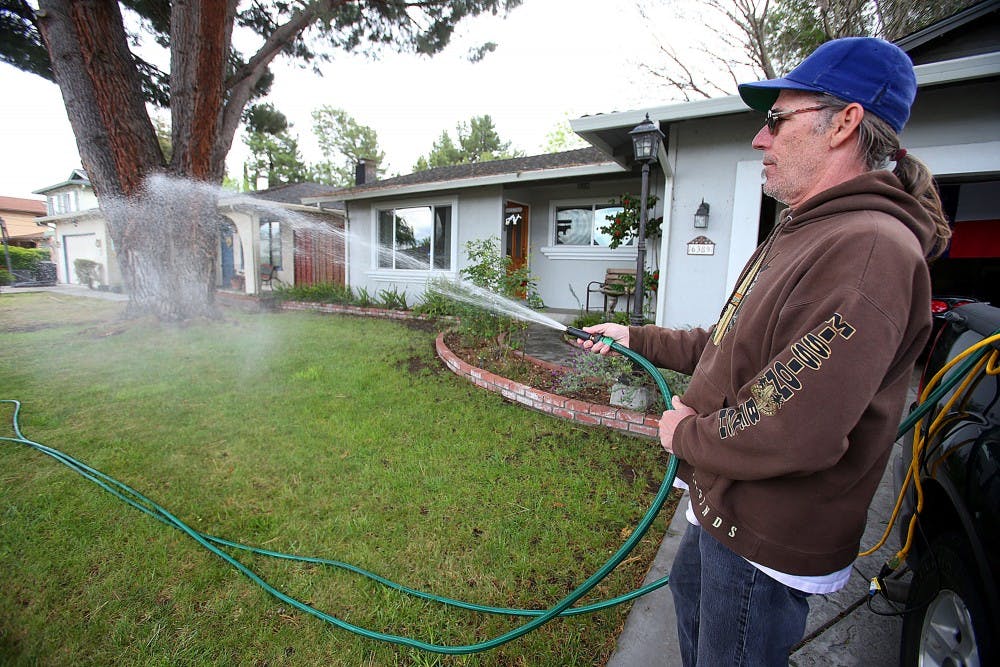With a dwindling water supply and looming drought in Arizona, ASU, a major water consumer has been making strides in water conservation and efficiency.
ASU already has several standards in place to ensure that water is conserved and is constantly looking to develop and implement additional programs. These standards have successfully helped ASU reduce its water use per person by 19.6 percent since 2007, coordinator of sustainability practices JoEllen Alberhasky said.
Alberhasky said part of the effort includes xeriscape landscaping principles, in which plants with a low demand for water are used for landscaping throughout all four campuses, especially on the Downtown and Polytechnic campuses.
In addition, Alberhasky said ASU uses low-flow plumbing fixtures in all of its new buildings and renovation projects, and leads the state of Arizona in the construction of Leadership in Energy and Environmental Design (LEED) buildings.
“Both water and energy efficiency are fundamental to the LEED designation,” Alberhasky said.
ASU has found ways to reduce water usage in its cooling system as well, with one innovation at West campus that reduced water usage by over 50 percent, Alberhasky said.
These kinds of conservation efforts will prove important in the future as the Colorado River water continues to deplete. Drought declaration is projected to happen around 2017 if the dry spell continues, Alberhasky said.
With the dry climate in Arizona, however, water conservation has long been a priority, Alberhasky said.
“In fact, Arizona passed the groundbreaking legislation, the Arizona Groundwater Act in 1980 which initiated several phases of actively managing its groundwater resources and developing both the use of Colorado River water as well as creating several incentives for the use of reclaimed effluent on parks, golf courses and other appropriate uses,” Alberhasky said.
Moving forward, ASU plans to continue its water conservation efforts and has established a Water Assessment Committee, which continually develops strategies to improve water efficiency and is comprised of representatives from the Facilities Management Department, the Ira A. Fulton School of Engineering, the Decision Center for a Desert City, the School of Sustainability, as well as from Residential Life and Sustainability Practices, Alberhasky said.
Ruben Lopez, manager of grounds services at ASU, spoke about ASU’s efforts to improve water efficiency in landscaping as well.
“A couple years ago the university hired a consultant group called Design Elements Consulting and they looked at our irrigation system and came up with a master plan for a new, more efficient irrigation system,” Lopez said.
Lopez said this irrigation system involves the use of Calsense controllers, which are linked to a computer automated system that communicates with weather stations to estimate an Evaporation Transpiration (ET) rate, which is the rate at which water will leave the plants and evaporate from the soil, in order to make the proper adjustments.
“This new system, which we hope to have the whole campus on (we have 10 now), has cut down water use just by adjusting ET rates,” Lopez said. “It’s going to greatly reduce the amount of water we use on campus.”
According to Lopez, these innovations will have quite an impact as landscaping makes up one of the largest portions of water usage at ASU.
Associate director of facilities management, Richard Pretzman, discussed some of the other developments in water conservation at ASU, such as its award-winning water reclamation project.
According to Pretzman, the water used in ASU's cooling towers is essentially used five times to help provide air conditioning to campus facilities.
"We concentrate it five times before it goes down the drain by treating it chemically so we can use it as much as possible," Pretzman said.
Pretzman said that ASU’s School of Sustainability and LightWorks collaborates with representatives from Intel and other corporations to identify new technologies that can be utilized on campus.
“We are looking at our cooling towers and large systems in the central plant to see how we can use our water further,” Pretzman said. “It’s an ongoing project to continually try to push the envelope there.”
Reach the reporter at icastil3@asu.edu or follow @isabella_m_cast on twitter
Like The State Press on Facebook and follow @statepress on Twitter




